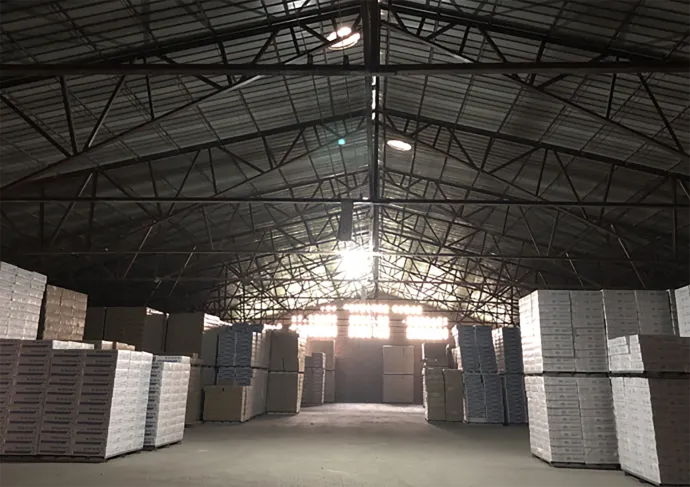- Afrikaans
- Albanian
- Amharic
- Arabic
- Armenian
- Azerbaijani
- Basque
- Belarusian
- Bengali
- Bosnian
- Bulgarian
- Catalan
- Cebuano
- Corsican
- Croatian
- Czech
- Danish
- Dutch
- English
- Esperanto
- Estonian
- French
- German
- Greek
- Hindi
- Indonesian
- irish
- Italian
- Japanese
- Korean
- Lao
- Malay
- Myanmar
- Norwegian
- Norwegian
- Polish
- Portuguese
- Romanian
- Russian
- Serbian
- Spanish
- Swedish
- Thai
- Turkish
- Ukrainian
- Uzbek
- Vietnamese
нов . 13, 2024 02:27 Back to list
grid ceiling material price
Understanding the Cost of Grid Ceiling Materials
When it comes to interior design, the choice of ceiling material plays a crucial role in aesthetics, acoustics, and overall ambiance. One popular option that often comes into play is the grid ceiling system. This innovative solution not only allows for easy installation and adjustments but also provides a versatile framework for integrating various ceiling tiles. However, understanding the costs associated with grid ceiling materials is vital for both homeowners and contractors.
Grid ceilings, often referred to as suspended ceilings or drop ceilings, consist of a framework of metal grids that support lightweight tiles or panels. The primary materials in a grid ceiling system include the metal grid itself, which can often be made from aluminum or galvanized steel, as well as the ceiling tiles that can vary widely in material, texture, and design.
Types of Grid Ceiling Materials
The cost of grid ceiling materials can fluctuate based on various factors, including the type of materials chosen. Standard mineral fiber tiles are popular due to their affordability and sound absorption qualities, often ranging from $0.75 to $2 per square foot. For a more sophisticated look, homeowners may choose vinyl or fiberglass tiles, which can cost between $2 to $5 per square foot. High-end options like wood veneers or custom-designed tiles can even exceed $10 per square foot, depending on the design and production costs.
Moreover, the grid systems themselves, which are essential for supporting the tiles, also have a price range. Basic T-bar grids made from steel typically range from $1 to $3 per linear foot, while specialty grids, such as those designed to hold heavier tiles or specific aesthetic profiles, can go up to $5 or more per linear foot.
grid ceiling material price

Additional Considerations
Budgeting for a grid ceiling project involves more than just the raw materials. Installation costs also come into play. Hiring a professional contractor can add significantly to the overall expense—installation labor might range from $1 to $3 per square foot based on the complexity of the job and local labor rates. DIY installation can save money, but it requires knowledge and understanding of the material handling and installation processes.
Additionally, factors such as the size of the space, whether any drywall or structural changes are necessary, and the overall design vision will influence the final cost. For example, if a room has an irregular shape or requires unique lighting fixtures integrated into the ceiling design, these elements will further impact the expenses.
Conclusion
In summary, grid ceiling materials present a flexible and cost-effective solution for anyone looking to enhance their interior spaces. Understanding the price ranges for various components—from tile types to grid systems—enables homeowners and contractors to make informed decisions based on budget and design preferences. By carefully planning the project and considering both material and installation costs, it is possible to create an attractive and functional ceiling that meets practical needs while fitting within financial constraints. Investing time in research and planning can ultimately lead to a space that is both visually appealing and acoustically effective, fulfilling the desired aesthetic without breaking the bank.
-
Transform Interiors with PVC Gypsum Ceiling: A Stylish, Durable, and Moisture-Resistant SolutionNewsMay.19,2025
-
The Smart Interior Upgrade: Discover the Durability and Versatility of Gypsum Ceiling Access Panel SolutionsNewsMay.19,2025
-
The Smart Choice for Interior Design: Discover the Value of PVC Gypsum Ceiling SolutionsNewsMay.19,2025
-
Mineral Fiber Ceiling Tiles: The Smart Blend of Performance and AestheticsNewsMay.19,2025
-
Mineral Fiber Ceiling Tiles: The Superior Choice Over Gypsum for Sound and Fire SafetyNewsMay.19,2025
-
Mineral Fiber Ceiling Tiles: Eco-Friendly Strength and Style for Every CeilingNewsMay.19,2025







